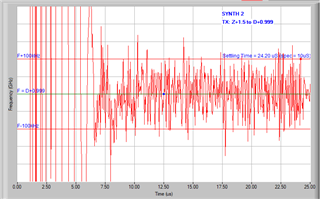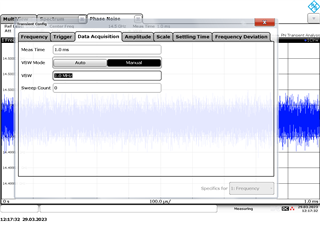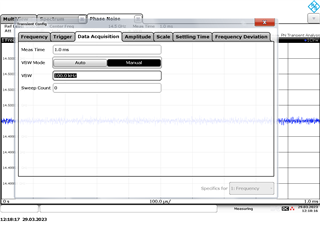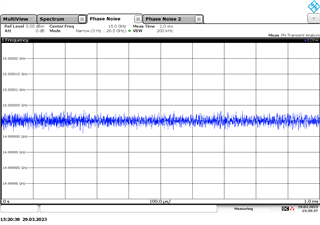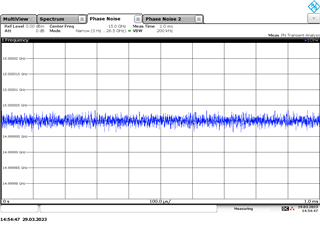I am currently using the LMX2595 at +85C in Full Assist mode with a calibration ran at +85C
We are seeing a problem when tuning to the end of the VCO7 core where on an SSA, the frequency looks very noisy (not unlocked just poor looking). I can provide a graph of it at +85C once I obtain, I've attached what it looks like at +25C
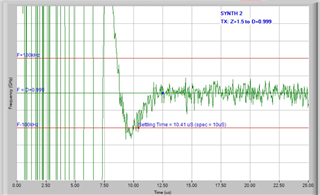
At hot, the "settled" frequency is much noisier (think zoomed in)
I was wondering if the Kvco for this core would affect it and cause that, a couple months ago I was encountering Kvco problems at -40C and thought that this issue might be related: e2e.ti.com/.../lmx2595-calibration-at-25c-does-not-lock-at--40c-for-vco4


